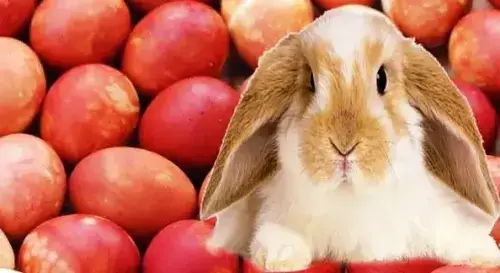Celebrating Easter. The arrival of spring has always held a special place in the human heart. For centuries, our ancestors awaited the season when the sun would climb higher into the sky, days would grow longer, and nature would awaken from its winter slumber.
It is during this time of vibrant renewal that we celebrate Easter; a holiday rich in meaning, history, and tradition.
Celebrating Easter, a beautiful day.
Easter is much more than a single day on the calendar. It is a unique blend of Christian values and ancient beliefs, where the promise of resurrection and new life meets the age-old rhythms of nature.
This holiday connects us to the wisdom of the past, while inviting us to embrace the joys and hopes of the present.
Christianity in Europe.
Long before Christianity spread across Europe, the early peoples of the continent marked the arrival of spring with festivals celebrating the rebirth of nature and the victory of light over darkness.
Communities gathered to light bonfires, offer food to fertility gods, and perform rituals to ensure a prosperous year.
Egg in this day.
One of the most enduring symbols from these ancient celebrations is the egg. This a universal emblem of new life, fertility, and the sun’s return.
People decorated eggs and exchanged them as tokens of hope and good fortune.
The playful Easter Bunny, too, has deep roots in European folklore. Hares and rabbits, known for their incredible fertility, were symbols of abundance and renewal, long before they hopped into modern Easter baskets.
Easter in world.
Even the word “Easter” is believed to come from Eostre (or Ostara), the Anglo-Saxon goddess of spring, whose festival coincided with the spring equinox a time when day and night are perfectly balanced.
When Christianity took root in Europe, the Church gave new meaning to these age-old spring celebrations by aligning them with the story of Christ’s resurrection.
By the 2nd to 4th centuries, Easter had become a cornerstone of Christian life a moment to celebrate the triumph of life over death, hope over despair.
Across the world, Easter traditions reflect this beautiful blend of heritage and faith.
In England, families gather for egg hunts, enjoy chocolate treats, and take part in the time-honored custom of rolling eggs down hills, symbolizing the stone rolling away from Christ’s tomb.
In the United States, the holiday is celebrated with church services, festive parades, family feasts, and the famous White House Easter Egg Roll a tradition that dates back to 1878.
In Latvia, Easter morning begins with the friendly game of egg tapping a light-hearted contest to see whose painted egg is the strongest followed by swinging on wooden swings to welcome the sun and bring good luck for the months ahead.
In neighboring Lithuania, families gather to create intricately decorated eggs using wax-resist techniques, honoring a craft passed down through generations.
In Poland, Easter is steeped in rich symbolism and ritual.
Holy Saturday is marked by the blessing of Easter baskets filled with traditional foods, while Easter Monday known as Śmigus-Dyngus is a day of playful water fights, symbolizing cleansing, joy, and the arrival of spring.
Though customs may vary from country to country, the heart of Easter remains the same: a celebration of life, renewal, and hope.
Whether through the ringing of church bells, the cracking of colorful eggs, or the laughter of children chasing rabbits in the garden, Easter reminds us that light always returns and with it, the promise of new beginnings.
Ancient European Motifs and Traditions.
🌱 Spring Awakening Festivals.
In ancient European cultures, this time of year was marked by celebrations of nature’s rebirth and the return of life to the earth. Communities honored the season by offering animal sacrifices, sharing ritual foods, and lighting sacred bonfires to pay tribute to fertility gods and sun deities.
🥚 Eggs A Symbol of Fertility.
Long before the arrival of Christianity, eggs were an essential part of springtime celebrations. They symbolized the renewal of life, fertility, and the life-giving power of the sun. People would dye and decorate eggs, exchanging them as wishes for a new beginning and prosperity.
🌸 Fertility and Spring Goddesses.
The English word Easter is believed to have originated from Eostre (or Ostara), the Anglo-Saxon goddess of spring and fertility. Celebrations dedicated to her were closely linked to the spring equinox, the moment when day and night are perfectly balanced, marking the arrival of longer and brighter days.
🐇 The Hare as a Symbol of Fertility.
In ancient European folklore, the hare was deeply associated with fertility and the life force of nature.
As spring arrived and hares became more visible in the fields, they naturally became a symbol of the season. Over time, this ancient motif evolved into the beloved modern tradition of the Easter Bunny.
Happy Easter!






